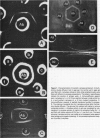Abstract
A polyclonal antiserum against mustard (Sinapis alba L.) β-amylase was obtained by injecting a homogeneously purified enzyme preparation in rabbits. The formation of β-amylase specific antibodies was confirmed by staining the precipitin line in double diffusion gel for β-amylase activity. The monospecificity of antiserum against mustard β-amylase was also ascertained by Western blotting. The antiserum efficiently recognised both the denatured and the native form of β-amylase, but it did not cross-react with other higher plant β-amylase. The mode of photoregulation of β-amylase activity in mustard cotyledons was investigated by a variety of immunochemical techniques. Immunotitration experiments ruled out the possible contribution of enzyme activation/inactivation in photoregulation of β-amylase activity. The use of single radial immunodiffusion, rocket immunoelectrophoresis, and immunotitration confirmed that the light mediated increase in β-amylase activity quantitatively corresponds with the increase in β-amylase protein level. The in vivo labeling with l-[35S] methionine and pulse chase studies of in vivo labeled β-amylase protein revealed that the photoregulated increase in β-amylase activity in mustard cotyledon exclusively results from an increase in the rate of de novo synthesis of β-amylase protein against a very low background rate of enzyme degradation.
Full text
PDF






Images in this article
Selected References
These references are in PubMed. This may not be the complete list of references from this article.
- Attridge T. H., Johnson C. B., Smith H. Density-labelling evidence for the phytochrome-mediated activation of phenylalanine ammonia-lyase in mustard cotyledons. Biochim Biophys Acta. 1974 May 24;343(3):440–451. doi: 10.1016/0304-4165(74)90261-x. [DOI] [PubMed] [Google Scholar]
- Bonner W. M. Use of fluorography for sensitive isotope detection in polyacrylamide gel electrophoresis and related techniques. Methods Enzymol. 1983;96:215–222. doi: 10.1016/s0076-6879(83)96019-6. [DOI] [PubMed] [Google Scholar]
- DAVIS B. J. DISC ELECTROPHORESIS. II. METHOD AND APPLICATION TO HUMAN SERUM PROTEINS. Ann N Y Acad Sci. 1964 Dec 28;121:404–427. doi: 10.1111/j.1749-6632.1964.tb14213.x. [DOI] [PubMed] [Google Scholar]
- Daussant J., Corvazier P. Biosynthesis and modifications of alpha- and beta-amylases in germinating wheat seeds. FEBS Lett. 1970 Apr 2;7(2):191–194. doi: 10.1016/0014-5793(70)80154-5. [DOI] [PubMed] [Google Scholar]
- Juliano B. O., Varner J. E. Enzymic degradiation of starch granules in the cotyledons of germinating peas. Plant Physiol. 1969 Jun;44(6):886–892. doi: 10.1104/pp.44.6.886. [DOI] [PMC free article] [PubMed] [Google Scholar]
- Lamb C. J., Rubery P. H. Interpretation of the rate of density labelling of enzymes with 2H2O. Possible implications for the mode of action of phytochrome. Biochim Biophys Acta. 1976 Feb 24;421(2):308–318. doi: 10.1016/0304-4165(76)90297-x. [DOI] [PubMed] [Google Scholar]
- Mancini G., Carbonara A. O., Heremans J. F. Immunochemical quantitation of antigens by single radial immunodiffusion. Immunochemistry. 1965 Sep;2(3):235–254. doi: 10.1016/0019-2791(65)90004-2. [DOI] [PubMed] [Google Scholar]
- Neville D. M., Jr Molecular weight determination of protein-dodecyl sulfate complexes by gel electrophoresis in a discontinuous buffer system. J Biol Chem. 1971 Oct 25;246(20):6328–6334. [PubMed] [Google Scholar]
- Newbury H. J., Smith H. Immunochemical evidence for phytochrome regulation of the specific activity of ascorbate oxidase in mustard seedlings. Eur J Biochem. 1981 Jul;117(3):575–580. doi: 10.1111/j.1432-1033.1981.tb06376.x. [DOI] [PubMed] [Google Scholar]
- Okamoto K., Akazawa T. Enzymic Mechanism of Starch Breakdown in Germinating Rice Seeds: 9. DE NOVO SYNTHESIS OF beta-AMYLASE. Plant Physiol. 1980 Jan;65(1):81–84. doi: 10.1104/pp.65.1.81. [DOI] [PMC free article] [PubMed] [Google Scholar]
- Santel H. J., Apel K. The protochlorophyllide holochrome of barley (Hordeum vulgare L.). The effect of light on the NADPH:protochlorophyllide oxidoreductase. Eur J Biochem. 1981 Nov;120(1):95–103. doi: 10.1111/j.1432-1033.1981.tb05674.x. [DOI] [PubMed] [Google Scholar]
- Subbaramaiah K., Sharma R. Affinity chromatography of mustard beta-amylase on starch columns. J Biochem Biophys Methods. 1985 Mar;10(5-6):315–320. doi: 10.1016/0165-022x(85)90066-1. [DOI] [PubMed] [Google Scholar]
- Towbin H., Staehelin T., Gordon J. Electrophoretic transfer of proteins from polyacrylamide gels to nitrocellulose sheets: procedure and some applications. Proc Natl Acad Sci U S A. 1979 Sep;76(9):4350–4354. doi: 10.1073/pnas.76.9.4350. [DOI] [PMC free article] [PubMed] [Google Scholar]




